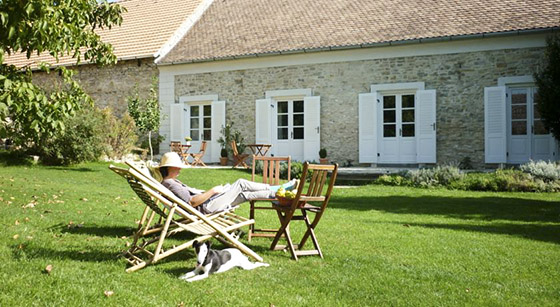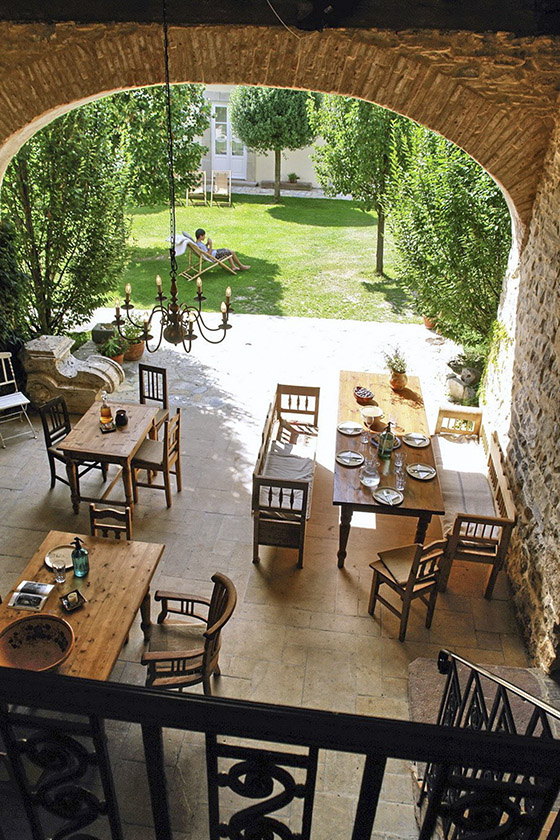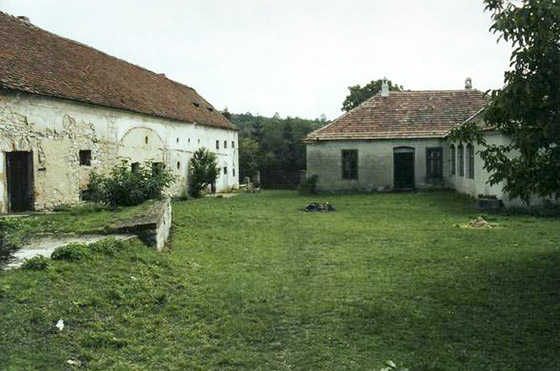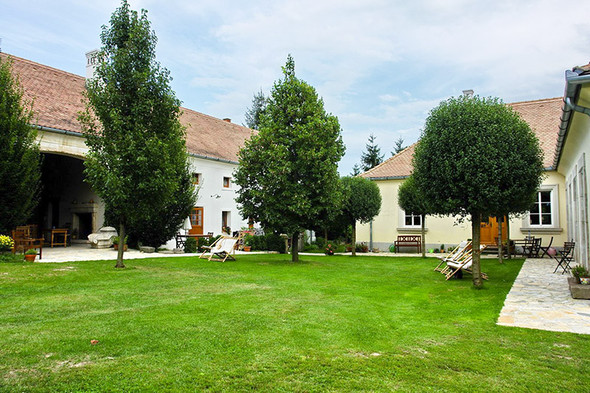We have known, said, written and asserted over and over again for a long time that Balaton-Uplands is Hungary’s own, self-contained Tuscany. Anyway, it’s just cosmic irony that not the valiant Italians keep comparing their beauties to the northern shores of Balaton. Two thousand years ago, the Roman legions had stationed here to no avail, because since then they – seem to – have learnt to build their own brand and have forgotten about the magic of this land. Despite of this, or maybe because of this, the villages in the region have such an atmosphere that is truly unique within Hungary. This region is ancient and Hungarian and does not even have to brag about it and it is also an international ace (or at least it could be) in a way that it does not even come into question that it should compare to anything. Only our miserly imagination and set of examples, unable to describe by other means this earthly paradise, compare it to the Tuscan landscape.

A unique feature of this land, contrary to other parts of the country, is that numerous families of the lower nobility lived in its villages therefore the evolution of land tenures and the streets have taken a different shape throughout the centuries. Thus the number of mud buildings with beaten earth floor belonging to the poor peasants is lower but no sumptuous aristocratic palaces stir our imagination either. There are, however, quite many proportionately measured, nice stone buildings at some places in the shape of traditional longhouses that may only be given away by their baroque façade and the organisation of their rooms inside, and at other places in the form of smaller mansions. Nevertheless, such unity that is represented by the former Sárffy-home in Kisdörgicse may not be found on the whole territory of Balaton Uplands. The mansion, the granary, the carriage shed and the stalls formed a homogenous whole on the plot, while the tenures laid in the outskirts of the village and other villages. Of course, through the tragedies known too well in Eastern Europe, these buildings were also almost destroyed but fortunately, there was a family that ventured this renovation that may have been regarded as a cul de sac by many others. And apparently they managed to find a good function for the buildings, which is the most important thing in case of projects of a similar size from the aspect of long term survival.

János Sárffy was seen as a great lord on his native land. Following its construction in 1890, the estate in Kisdörgicse towered, also in its appearance, over the other estates of the lower and middle nobility in the neighbourhood. As was customary at that age, visitors most probably came and went in the house, if not, the lord set out on a trip to Füred, Veszprém or other corners of the country. Of this Károly Eötvös writes:
“They decide the journey. Whether to national holidays, to visit kins, to the election of new officials, to celebrate name days, to bath or to remote markets, as occasion arises. / The journey takes a two-days walk. On their way there are two relatives, a fellow student, six villages-towns, twelve wayside inns. Whether to feed the horses or take them to water, they must stop everywhere. And they must also sleep. A kin or a fellow student must be visited. Passing by their house, not paying a visit or not staying for lunch or supper are morally impossible. / He who passes by his relative or good friend not even greeting them, do not want to be visited either. Such person does not like visitors and relatives; denies their blood and is misanthrope. One must always steer clear of such person. Such person will amount to nothing in the county.”
The fall of the country brought along that of the families’ too. After nationalization, the buildings were used by the collective, just being set up at the time, and later on, the residents of Kisdörgicse watched TV here for the first time, a TV that they bought together. The estate that had become uninhabitable by the late eighties, was exchanged between owners several times after the regime change until a young and very creative couple, Tamás Giebiszer and Kati Sipeki bought it in 2001. The “first TV” that had long disappeared by that time was also the last one in the existence of the house as the new owners decided that after the renovations they would attempt to revive the former life of the house as well.

That is how the mansion was transformed into a beautifully renovated residence, the carriage shed was revived as a dining room, the stalls and the granary became suites and the former locksmith workshop separated with a wall was turned into a community space. The garden and the buildings evolved in perfect harmony and this way today it all looks as if they looked like this forever and maybe even the old Sárffy would become envious of it, if he saw it. The whole of the interior design reflects the owners’ taste, no ostentation, classical elegance and extremely good proportions characterize the renewed estate. They are the ones welcoming the guests since they have moved here together with their children.

After the barbecues, the breakfasts and dinners together, the wine tasting events, the musical occasions, the peaceful relaxations and great discussions one can have the feeling to be rather a visitor than a guest paying for accommodation here. Like a distant cousin, a forgotten relative whose great-grandmother had moved to New York, whose great-great grandfather had been disowned from the family, someone who meets his relatives for the first time. And “relatives” are endlessly coming, swim in the new pool, make apple pie together with Kati, take the bike for the afternoon, like the elderflower syrup or chat about the great issues of the world with Tamás, in other words they live in the building like in their homes. Probably, life was not that vivid here even at the time of the Sárffy family and maybe there is no better way of reviving their long lost lifestyle. According to Proust:
“The real voyage of discovery consists not in seeking new landscapes, but in having new eyes.”
Once you become Tamás’ and Kati’s guest, the above quote makes sense and, for a couple of days, you may have the feeling that life does not only make sense if it is fast-paced but also if you live it slow and carefully, what is more this is how it really makes sense.






